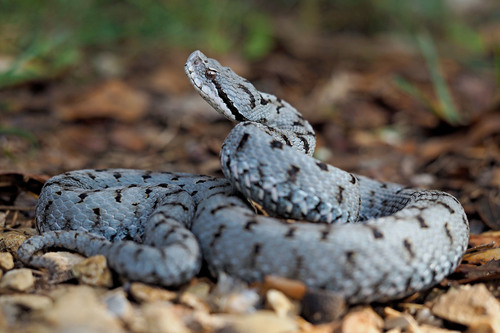
Asp Viper
The asp viper, with its iconic triangular head and upturned snout, thrives in Europe's rocky terrains. This elusive predator expertly camouflages, striking swiftly at unsuspecting prey, thus playing a crucial role in balancing local ecosystems.
15-20 years
Lifespan
Length: 61 - 91 cm
Size
Brown, Grey, Orange
Color
Vulnerable
Conservation Status
Decreasing
Population Trend
Characteristics
Vipera aspis, commonly known as the asp viper, is a venomous snake found in southern Europe. It prefers rocky hillsides, woodlands, and grasslands. Noted for its distinctive triangular head and upturned snout, it is a master of camouflage and ambush, preying on small mammals and birds.
Distribution Range of the Asp Viper
Vipera aspis, commonly known as the asp viper, is native to Western Europe. Its geographical distribution includes countries such as France, Italy, Switzerland, and parts of Spain. It is also found in some areas of Germany and Slovenia.
Asp Viper's Habitat
Environmental Conditions
The asp viper typically inhabits warm, dry environments with abundant sunlight. It prefers rocky hillsides, open woodlands, and areas with sparse vegetation. The climate in these regions is generally temperate, with seasonal variations in temperature and precipitation.
Ecological Niche
As a terrestrial reptile, the asp viper occupies a niche as a predator of small mammals, birds, and lizards. It plays an important role in controlling the populations of these animals. The species is well-adapted to its environment, using its camouflaged appearance to blend into rocky and vegetated areas to ambush prey.
Copyright @ Nature Style Limited. All Rights Reserved.
 English
English